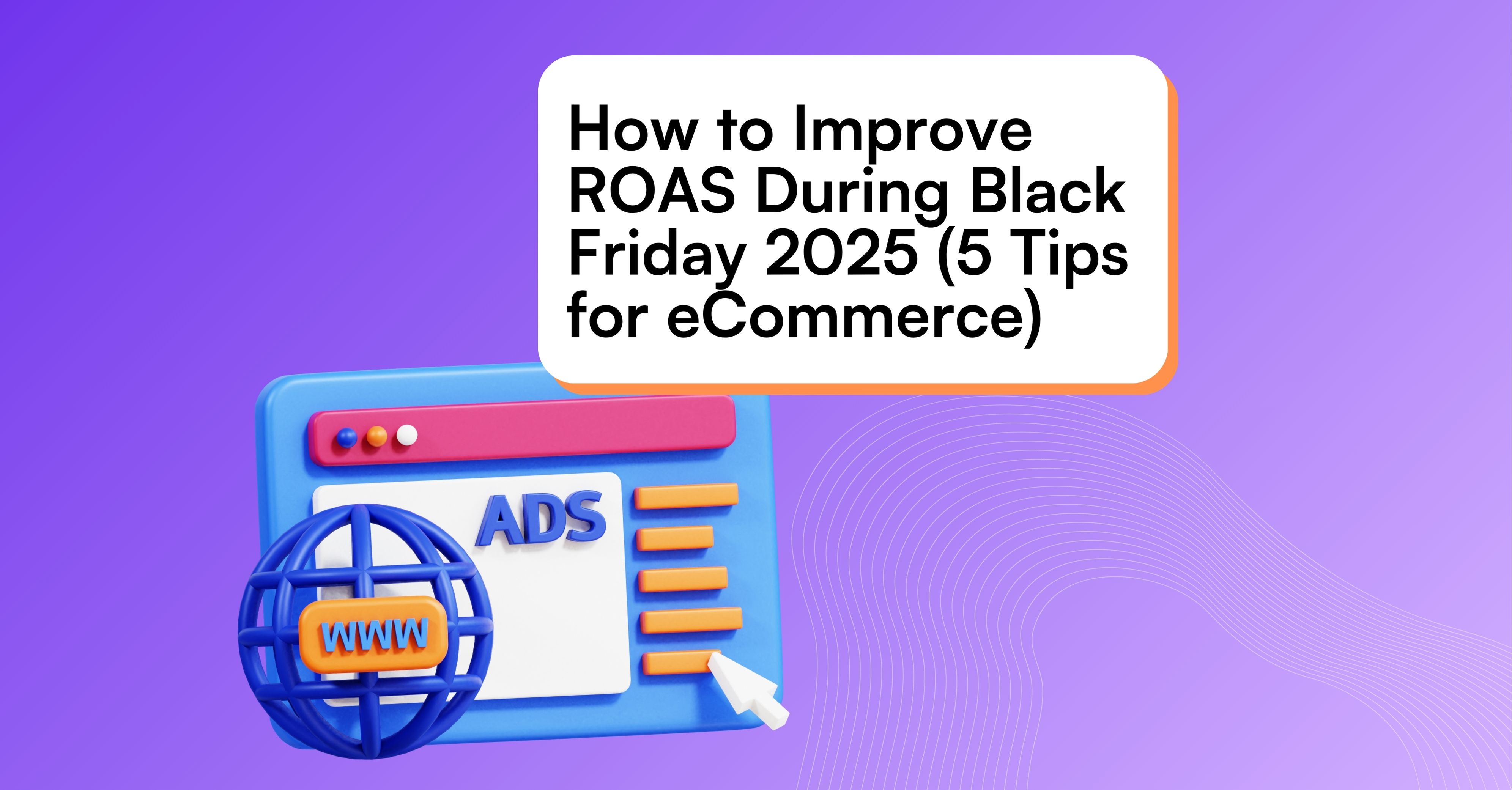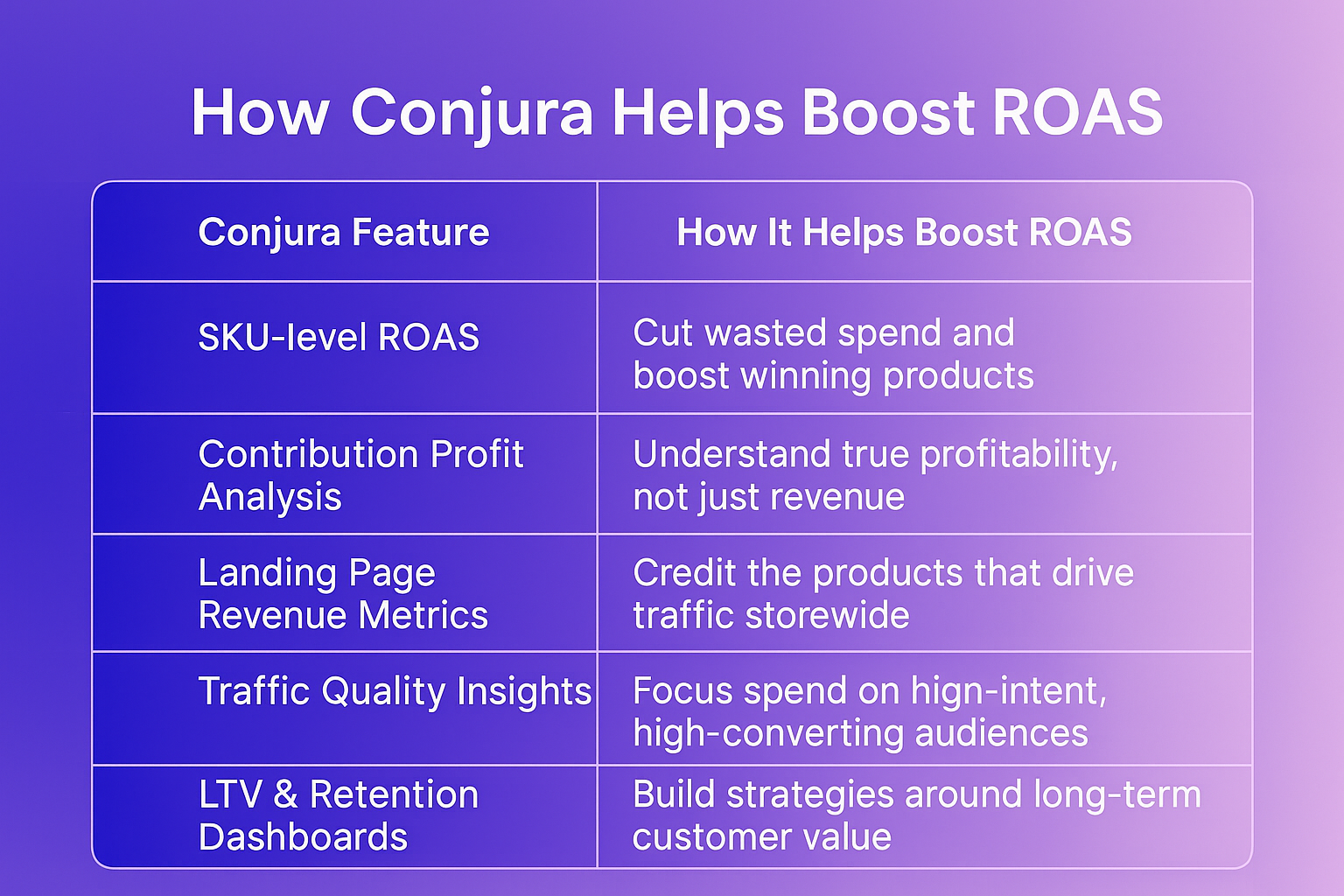December 1, 2025
5 Best Inventory Forecasting Software for eCommerce Brands
Getting your inventory forecasting spot on is an absolute non-negotiable for profitable growth. Here are our top 5 best inventory forecasting software for eCommerce brands.
eCommerce
Thursday, October 30, 2025
This is how your eCommerce business can improve ROAS during Black Friday. With customer acquisition costs rising and ad platforms becoming increasingly competitive, performance marketers are under more pressure to prove ROI.

Black Friday is the Super Bowl (or Champions League final for all you UK folks!) of eCommerce and in 2025, it's expected to be bigger (and more expensive) than ever. With customer acquisition costs rising and ad platforms becoming increasingly competitive, performance marketers are under more pressure to prove ROI. That’s where ROAS - Return on Ad Spend - takes center stage.
ROAS is the metric that shows how much revenue you generate for every dollar (or Pound or Euro) you spend on advertising. It’s a key performance indicator for eCommerce businesses, especially during high-stakes sales periods like Black Friday and Cyber Monday. But here’s the catch: while most brands track ROAS at a campaign or channel level, that’s no longer good enough.
If you want to win during Black Friday 2025, you’ll need to go beyond averages and surface-level metrics. In this post, we’ll cover five proven, data-led ways to improve your ROAS and turn your marketing spend into profit.
Most brands analyze ROAS by campaign, platform, or ad group. It’s convenient, but it’s also dangerously broad.
Imagine running a Google Shopping campaign that includes 50 products. Some of them are bestsellers, some are duds. When you look at campaign-level ROAS, it might look like you're doing fine. But what if 80% of the revenue came from just five products, and the rest are dragging your average down?
This is why SKU-level ROAS is a game-changer.
With Conjura, you can attribute ad spend down to the specific product level, not just the campaign or collection. That means you can identify the individual SKUs that are soaking up ad budget without converting, and reallocate spend to your top-performing products.
And we don’t just mean “products that sold.” We mean products that actually received ad clicks, something most analytics platforms can’t track accurately. Conjura does this by analyzing product landing page traffic and matching it to ad spend across platforms like Meta, TikTok, and Google.
Let’s say Product A and Product B are both in the same campaign. Product B has a higher ROAS because it sells more units, but when you dive deeper, you see that Product A’s landing page drives more traffic and contributes to sales across your store. That’s value hidden in plain sight.
Especially during Black Friday, when your budget is being burned fast.
A classic eCommerce mistake: assuming that a high ROAS means you’re profitable.
Spoiler alert… it doesn’t.
ROAS only tells you how much revenue you generated from your ad spend. It doesn’t account for your cost of goods sold (COGS), shipping costs, refunds, or ad platform fees. That’s why a better metric to track is Contribution Profit.
Conjura calculates Contribution Profit at the SKU level, so you can see which products are actually driving profit, not just revenue, after all direct costs are considered.
During Black Friday, many brands slash prices to compete. But if your margins are already thin, heavy discounting combined with aggressive ad spend can destroy profitability even if ROAS looks good.
Conjura Tip:
Filter your product table to show products with high ROAS but low Contribution Margin. These are the red flags you need to fix before Black Friday.
Here’s another sneaky ROAS trap: judging a product’s performance purely on its own sales.
Let’s break that down.
If you run ads for Product X and customers land on that page, but end up buying Product Y or Z, traditional ROAS reporting gives all the credit to Y and Z. Product X looks like a loser, even though it drove the sale.
That’s where Landing Page Revenue and Cross-Product Revenue come into play.
Let’s say Product X has a low ROAS on its own, but you discover that people who land on its page often end up buying bundles or related items. That’s value that would be missed in a basic ROAS model.
Solution? Don’t cut ad spend for Product X, promote it more aggressively. It’s your silent sales driver.
This insight helps you protect high-performing landing pages from getting incorrectly marked as underperforming. And during the madness of Black Friday, it’s these nuanced insights that can save thousands in wasted ad spend.
Here’s the hard truth: not all traffic is good traffic.
You could have the flashiest ads, the biggest discounts, and still end up with disappointing ROAS, because your site visitors simply weren’t ready to buy. Black Friday doesn’t just bring more shoppers. It brings more browsers, deal-hunters, and window-clickers.
So how do you make sure your ad budget is attracting high-quality traffic? The kind that converts?
With Conjura, you can monitor not just your conversion rate and click-through rate (CTR) at a campaign level, but also at the product level, segmented by channel.
This allows you to:
Once you know which traffic sources are underperforming, don’t hesitate to:
Low conversion often comes from misaligned messaging. Are your ads over-promising and under-delivering? Is your landing page experience consistent with your ad creative? Test variations of headlines, product angles, and CTAs to better align ad intent with landing page experience, especially when time is limited during Black Friday week.
One of the most overlooked ROAS tactics? Retention-based targeting.
Yes, Black Friday is a prime time to acquire new customers, but the real value often lies in existing and high-LTV audiences.
Not bad, right?
It depends on your margins…
Let’s address the elephant in the marketing room: what is a "good" ROAS for ecommerce?
This is why Conjura doesn’t stop at ROAS. It gives you:
Improving ROAS isn’t about working harder; it’s about seeing your data in a way that gives you smarter, faster decisions. Especially during peak periods like Black Friday.
Here's how Conjura helps brands take control:

If you’re gearing up for Black Friday 2025, ask yourself:
Are you optimizing based on true product profitability?
Do you know which products drive high-LTV customer acquisition?
Can you spot low-performing SKUs before they eat your ad budget?
If the answer isn’t a confident “yes” - it’s time to make your analytics work harder for you.
With the addition of our new AI agent, Owly AI, it's now even easier than ever to instantly craft personalised strategies to improve your ROAS during busy sales periods like Black Friday. Owly AI, works like your own in-house data analyst that understands your performance data inside out. Ask Owly anything about your business and gain instant insights, build reports and develop impactful strategies to go and implement.
In the end, ROAS alone isn’t the goal - profitable growth is. By tracking product-level performance, analyzing true contribution profit, and targeting customers who bring long-term value, you’ll build a smarter, leaner ad strategy that performs during Black Friday and beyond. And if you need help turning insights into action, Conjura’s analytics platform does exactly that, pulling together all your eCommerce and marketing data into dashboards that actually make decisions easier.
Discover the latest eCommerce guides, articles and tips to help your brand grow.
Book A Demo
Book a demo with one of our team to discover the power of Conjura and how it can transform your business.
Revenue Increase
"I’m a big fan of Conjura and there’s so much more for us to keep getting from it.”
Kayla Wilson, Marketing Director @ Furniturebox
Explore the
Platform
